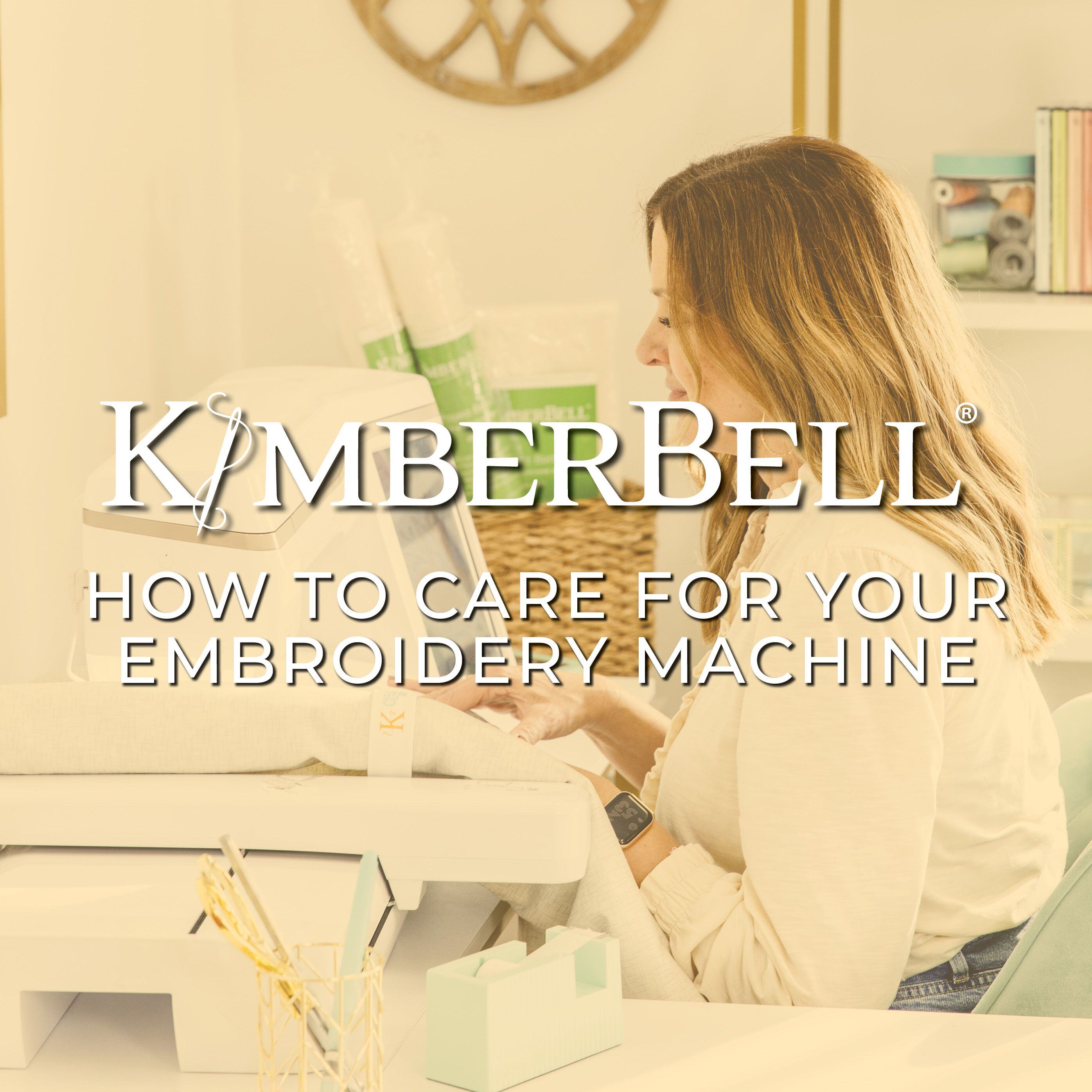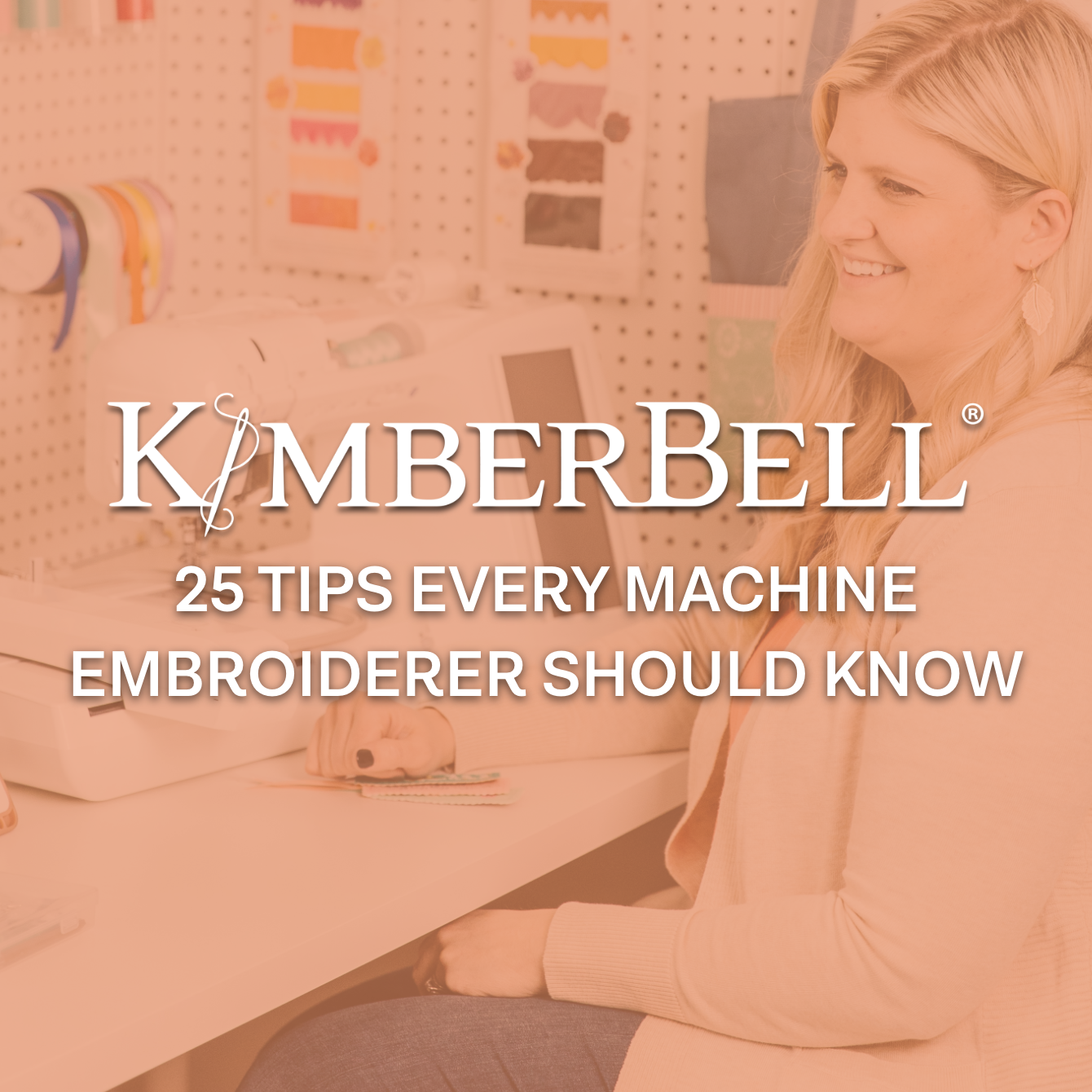How to Care for Your Embroidery Machine


Your home embroidery machine isn't just a tool, it's an investment! And just like you thoughtfully care for your house and car, you'll want to take good care of your machine so you can enjoy it for many years to come.
Kim and Ginger recently sat down with Ken, a sewing and machine embroidery repairman with over a decade of experience. They asked him how best to care for an embroidery machine and here's what he had to say!
![]()
How Often Should I Clean My Machine?
A dirty machine is a machine that won't run well. Your machine is going to collect A LOT of lint, and that lint needs to be cleaned out often—at least once a week.
Don't be afraid of taking off the needle plate, taking the bobbin case out, and cleaning out the area where the bobbin case sits. Use a cotton swab and twirl it around to collect the lint!

This is a little practice that can yield BIG results. (Most of the problems Ken sees in his repair work are caused by dirty, lint-filled machines!)
![]()
How Often Do I Take My Machine in for Maintenance?
Embroiderers know that there's only so much they can do at home and their machine needs professional maintenance from time to time. But how do you know when? Ken's rule of thumb is this:
If you're using your machine more than 15 hours per week, take it into the shop to be cleaned and oiled twice a year. If you use your machine under 12 hours per week, once a year should be just fine!

This general rule applies to both sewing and embroidery machines. 😊
![]()
What if My Machine Is Making a Weird Noise?
Embroiderers tend to take their machine to the shop when it's making a weird noise. According to Ken, having your machine cleaned will take care of 90% of those scary sounds!
If your machine is grinding, clanking, or making other noises that just don't sound normal, the first thing to do is turn your machine off. Wait 15-20 seconds, turn it back on, and start stitching slowly.

If you've cleaned your machine well and tried turning it off and back on again and it's still making noises, you should take it into the shop. It might need a minor repair like a new bobbin case or rotary hook.
![]()
Thread, Needle, Tension
If you ask a machine embroiderer what their biggest problem is, they’ll probably say tension. But tension issues are usually only about 10% of the problem! Most things can be fixed with thread and needle.
When experiencing problems with your stitching, remember to check your TNT: Thread, Needle, and Tension.
Thread
Good quality thread makes all the difference. Did you know thread eventually goes bad on the shelf? If you try snapping it and it breaks, it's just too brittle and you'll want to throw it away.

Older thread also generates more lint and fuzz, which hampers your stitching. If your thread holds on a snap, the thread quality is probably fine. (Learn more about machine embroidery thread HERE!)
Needle
Here's another rule of thumb: any time stitching doesn't look good, the first thing to do is change your needle. At Kimberbell, we change our needles after every 8 hours of stitching (at the very minimum)!
You can use a size 75/11 or 80/12 needle for most of your machine embroidery projects. (Learn more about embroidery machine needles HERE!)

Again, when in doubt, change your needle first. 😊 Ken also suggests turning your machine off and on again any time you're experiencing thread issues or when you're changing your needle.
Tension
Tension is the tautness of your thread. When looking at the underside of a satin stitch, about ⅔ of the thread should be needle thread and ⅓ should be bobbin thread.
Messing with tension settings can be a little tricky, so if you're having problems you might want to call your shop or check your manual to see what they advise for your machine.
Here's how tension works:

If you see bobbin thread coming through to the top of your project, you have too much top tension. In other words, your machine is pulling the bobbin thread up because the top tension is too high.
But if you look on the back of your project and don't see any bobbin thread (you're just seeing the top thread), you have too much bobbin tension and you're pulling the top thread to the bottom.
Tension can be adjusted on both the machine and the bobbin case but again, maybe talk to your shop or check your manual first!
![]()
Other Tips
If your machine isn't running properly, you're not getting the stitching therapy you love. Staying on top of these little tasks can help you more fully Experience the Joy of Creativity®!
So remember to clean your machine often at home, change the needle regularly, use good thread, and take your machine to the pros once or twice a year. If you do these things, you should be in great shape. 👍

Keep track of how often you take your machine into the shop for cleaning and oiling. (Remember Ken's rule of thumb: if you use your machine over 15 hours a week, bring it in twice a year to keep it happily humming!)
![]()
If you'd like to watch Kim and Ginger's conversation with Ken, you can do so HERE. The interview is a delight and includes so much good information!
Keep enjoying that incredible machine of yours . . .



